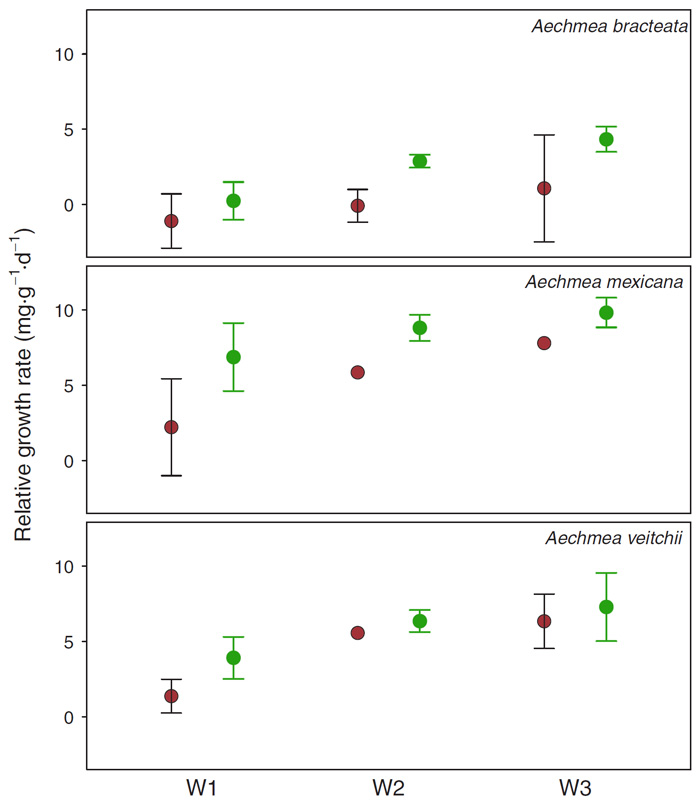| Follow @co2science |
Paper Reviewed
Wagner, K. and Zotz, G. 2018. Epiphytic bromeliads in a changing world: the effect of elevated CO2 and varying water supply on growth and nutrient relations. Plant Biology 20: 636-640.
Most CO2 enrichment studies to date have been conducted on plants that use the C3 and C4 carbon fixation pathways, while few are the studies that examine the impacts of rising atmospheric CO2 on plants that utilize the CAM (crassulacean acid metabolism) method. Fewer still are studies that examine the interactions of elevated CO2 with other factors, such as temperature or light. In the present study, Wagner and Zotz (2018) thus add much new knowledge in this regard by examining the impacts of elevated CO2 and water supply on three epiphytic Aechmea species (Aechmea bracteata, Aechmea mexicana and Aechmea veitchii).
Each of the three Aechmea species were grown in a controlled environment under either ambient (400 ppm) or elevated (800 ppm) CO2 concentrations and one of three water supply levels (plants receiving water once, twice or three times per week) over a period of 100 days. At the conclusion of the experiment, the authors then measured how these two factors (CO2 and water supply) impacted plant relative growth rates and foliar nutrient levels.
Results of their analysis revealed that elevated CO2 stimulated the relative growth rates of the three Aechmea species in each of the three watering regimes (see Figure 1). Water supply also had a positive effect. With respect to plant nutrients, Wagner and Zotz report that although concentrations tended to be less in plants in the high CO2 treatment, area-based nutrient content "did not differ" among plants growing in normal or a doubled-atmosphere of CO2, suggesting that "nutrients were not withdrawn but simply diluted by non-structural carbohydrates."
Nevertheless, the key take-home message of their work was the magnitude of the plant growth enhancement driven by elevated CO2, which stimulatory effect, they note, "exceeded the effects reported by almost all other studies for vascular epiphytes" and CAM plants in general. In fact, the percentage enhancement for the doubling of CO2 they observed was approximately three times higher than that reported in other studies (e.g., +23% by Poorter and Navas, 2003).

Figure 1. Effects of two different levels of atmospheric CO2 (400 ppm, red symbols; 800 ppm, green symbols) and three different watering regimes (one to three times per week; W1, W2 and W3, respectively) on relative growth rates of three Aechmea species. Source: Wagner and Zotz (2018).
Reference
Poorter, H. and Navas, M.L. 2003 Plant growth and competition at elevated CO2: on winners, losers and functional groups. New Phytologist 157: 175-198.




